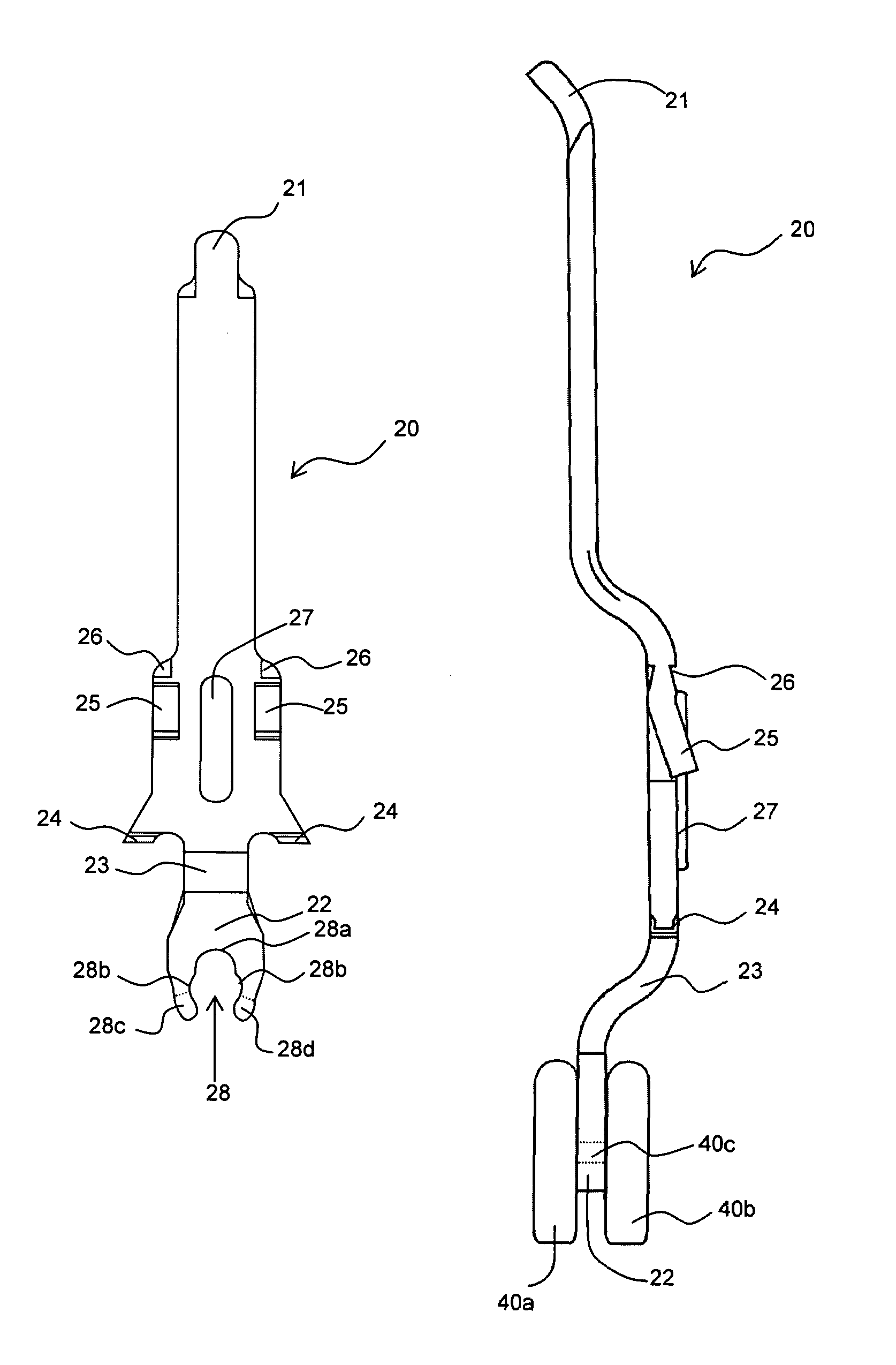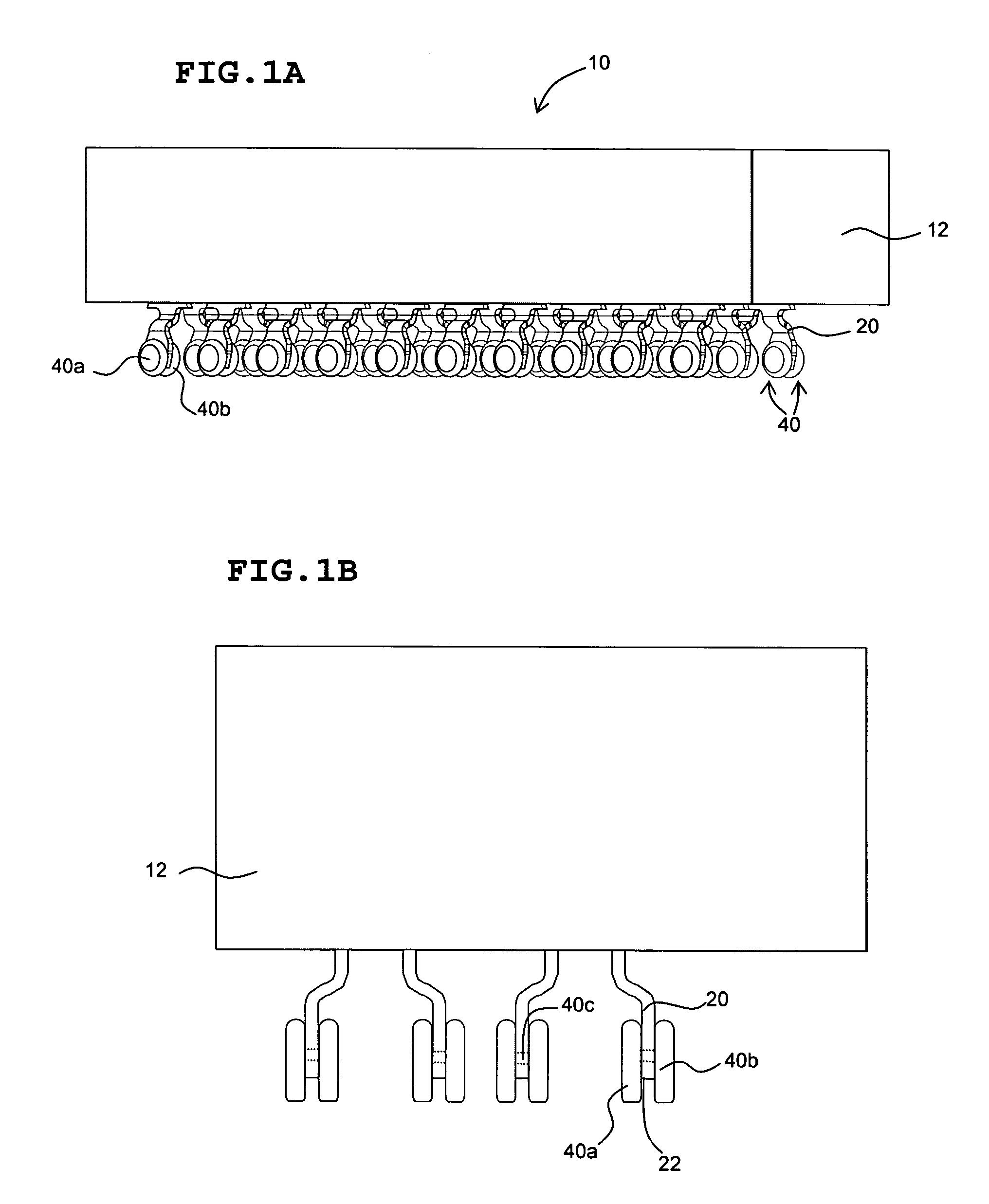Connector having improved contacts with fusible members
a technology of fusible members and connectors, applied in the field of electrical connectors, can solve the problems of increasing precision, increasing input/output density requirements, and increasing problems, and achieve the effect of reliably connecting a connector to a substrate and greater co-planarity
- Summary
- Abstract
- Description
- Claims
- Application Information
AI Technical Summary
Benefits of technology
Problems solved by technology
Method used
Image
Examples
Embodiment Construction
[0058]Preferred embodiments of the present invention will now be described with reference to the drawings.
[0059]FIG. 1A is an isometric view and FIG. 1B is an end view of a connector 10 according to a first preferred embodiment of the present invention. The connector 10 includes a body 12 that is preferably made of an insulating material such as plastic, a plurality of cores (not shown in FIGS. 1A and 1B, but shown as element 14 in FIG. 9 which illustrates another preferred embodiment of the present invention) formed in the connector body 12 for receiving a plurality of contacts, and a plurality of contacts or terminals 20 inserted into the cores and held in the body 12. It should be noted that the connector 10 is shown in FIGS. 1A and 1B in a state before being reflowed to be attached to a substrate such as a PCB.
[0060]As seen in FIGS. 1A and 1B, each of the contacts or terminals 20 includes a fusible member 40 that is fixed to a tail portion 22 of the contact 20. It should be note...
PUM
| Property | Measurement | Unit |
|---|---|---|
| Distance | aaaaa | aaaaa |
| Distance | aaaaa | aaaaa |
| Electrical conductivity | aaaaa | aaaaa |
Abstract
Description
Claims
Application Information
 Login to View More
Login to View More - R&D
- Intellectual Property
- Life Sciences
- Materials
- Tech Scout
- Unparalleled Data Quality
- Higher Quality Content
- 60% Fewer Hallucinations
Browse by: Latest US Patents, China's latest patents, Technical Efficacy Thesaurus, Application Domain, Technology Topic, Popular Technical Reports.
© 2025 PatSnap. All rights reserved.Legal|Privacy policy|Modern Slavery Act Transparency Statement|Sitemap|About US| Contact US: help@patsnap.com



